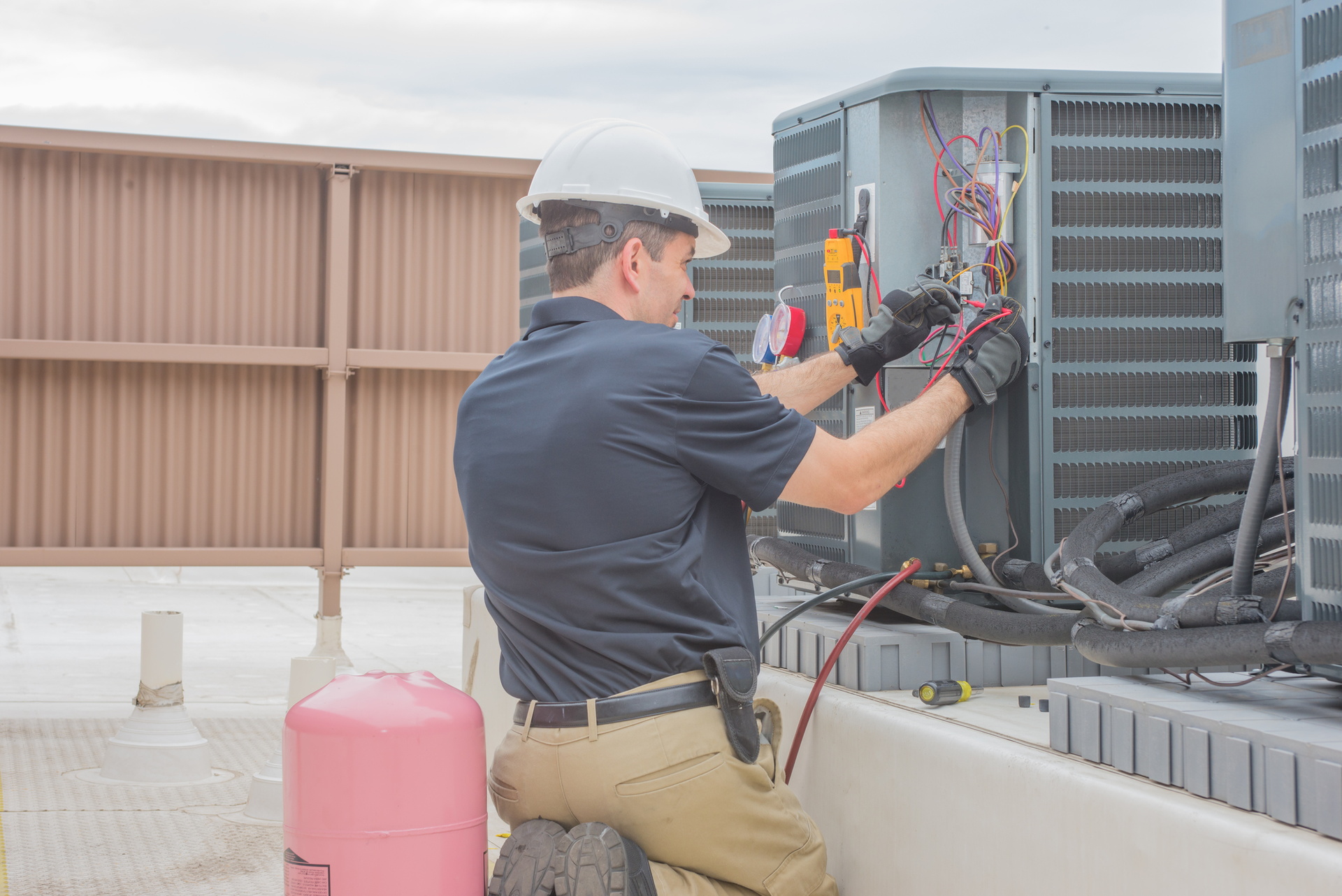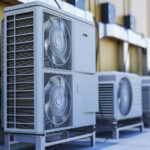
Heat Pump vs. Furnace: Which Is Best for Your Home?
Your heating system just died. Or maybe your energy bills keep climbing and you’re done throwing money away. Either way, you’re here because you need to pick between a heat pump and a furnace.
This guide breaks down installation costs, monthly energy bills, and how each system performs in Bay Area weather. By the end, you’ll know exactly which system fits your home and budget.
Not sure whether a heat pump or furnace fits your home best?

Heat Pumps vs. Furnaces: What’s the Difference?
You couldn’t find two more different ways to heat a house. Understanding how they work helps you see why each has its place.
How Heat Pumps Work
Here’s the thing about heat pumps. They don’t generate heat. They move it around. They’re basically air conditioners that work in reverse.
Heat Transfer Process
An electric heat pump grabs warmth from outdoor air during winter and hauls it inside your house. When summer hits, it does the opposite.
Works even when it’s cold outside because air holds thermal energy way below freezing. The refrigerant moves through the system, grabbing heat and dumping it where you want it. Meanwhile, the compressor jacks up the pressure and temperature.
Types of Heat Pumps
Air source models are what most people get. They pull heat from outdoor air. Work great in places like San Ramon and the East Bay, where winters stay mild.
Ground source systems tap into underground temperatures that stay constant all year. Cost more upfront. But they handle cold weather better. We don’t install many because you need space and the cost is wild.
Energy Efficiency
Moving heat beats making it. One unit of electricity in, two to three units of heating out. Regular systems can’t compete.
Dual Functionality
One system does both jobs. Heating and cooling. No need for separate equipment cluttering up your property.
How Furnaces Work
Gas gets burned, or electricity runs through coils to make heat. Been around forever. Your grandparents probably had one.
Heat Generation Process
Inside your central heating furnace, heat is created in a combustion chamber or through electric elements. The blower grabs that hot air, shoves it through your ductwork, and sends it out the vents into each room.
Types of Furnaces
Gas and electric are your main options for the types of furnaces for homes. Gas central heating furnaces win in popularity because natural gas costs less than electricity in most places.
Electric furnaces make sense when heating needs are light. No venting required. Zero carbon monoxide risk. But your PG&E bill in winter will sting.
Heating Power
A gas furnace pumps out intense heat. It can keep your house warm even when it’s freezing out there. Minneapolis hits 10 degrees and furnaces are what people trust. That furnace heating power is why cold climates stick with them. They’re the best home furnaces for cold regions.
Single Functionality
Most types of furnaces for homes just heat. You’ll need AC for summer.
The Pros and Cons of Heat Pumps: Who Should (and Shouldn’t) Consider Them
Heat pumps have real advantages. But they’re not right for everyone. Here are the differences between heat pumps and furnaces.
The Pros of Heat Pumps
Here are the pros and cons of heat pumps.
- Energy Efficiency: Heat pumps win this battle. No contest. Electric furnace efficiency isn’t great. Moving heat takes less energy than making it. Your heating bill drops 30% to 40% compared to electric furnaces. What you save depends on what PG&E charges and how much you heat. One Walnut Creek customer we helped last winter cut $65 off their monthly bill versus their old electric furnace.
- Dual Functionality: Getting both heating and cooling from one unit simplifies everything. One thing to maintain. Costs less than buying a furnace and AC separately.
- Environmentally Friendly: Zero direct emissions. Power plants burning fossil fuels are still cleaner than burning gas at home. Make the switch from a gas furnace to a heat pump and watch your carbon footprint shrink. PG&E’s been pushing rebates for this pretty hard.
- Long Lifespan: A well-maintained heat pump lasts 15 to 20 years. Regular residential heat pump maintenance is what makes that happen. Skip the maintenance and you’re asking for trouble.
Compare heat pump and furnace options with our local HVAC pros

The Cons of Heat Pumps
- Climate Limitations: Performance tanks when temps drop below freezing. When temps drop, your system has to work harder pulling heat from cold air. Your efficiency numbers take a hit. Cold climate heat pumps work down to -15°F. But they still struggle compared to furnaces when it’s brutal outside. Your backup heat strips kick on and your electric bill jumps. Really cold areas need backup heating. Keep your old furnace as a secondary or install electric resistance strips. That’s right; you can have a heat pump and furnace in your home.
- Higher Upfront Cost: Residential heat pump installation costs more than furnaces. You’re looking at $4,000 to $8,000 for a complete system. High-efficiency models push higher.
- Dependence on Electricity: Heat pumps need power. Outage hits and you lose heating and cooling. Gas furnaces need electricity, too, for blowers, though some run on battery backup. High electricity rates in your area? Operating costs might match gas furnaces. Check your PG&E rates first. Do your math before committing.
Who Should Consider a Heat Pump?
Places with mild winters work best. Winter temps around Pleasanton, Walnut Creek, and San Ramon usually hang above 30°F. Want both heating and cooling? One system beats juggling two.
Planning to stay long-term? The upfront cost pays off through lower bills. Our residential heat pump services team can crunch the numbers based on your actual usage and help you weigh the heat pump pros and cons.
Furnaces: Pros, Cons, and Who Should Consider Them
Furnaces keep delivering reliable heat anywhere. People trust what works.
Pros of Furnaces
- Powerful Heating. Nothing touches a furnace for raw power. Gas models keep you warm when outdoor temps are way below zero. The heat pump vs gas furnace debate usually comes down to climate. Furnaces work better when cold temps stick around.
- Lower Upfront Cost. Basic heating system installation for a gas furnace runs cheaper than heat pumps. You’re looking at somewhere between $2,500 and $4,500 for most homes. Last fall, we installed a mid-efficiency unit in Castro Valley for just over $3,000.
- Fast Heating. The best home furnaces warm your house quickly. Flip the thermostat and you’ve got warm air in minutes. Heat pumps take longer because they push lower-temperature air.
- Fuel Options. Choose between gas furnace systems and electric models. Having options matters when you can’t get natural gas or when electricity prices are insane. Gas furnace systems usually cost less to operate.
Cons of Furnaces
- Higher Operating Costs: Gas beats electricity on cost per BTU. But even the best home furnaces waste energy. Even a 95% efficient model loses 5%. Over time, that adds up. For heat pumps vs electric furnaces, heat pumps are more efficient and will cost less to run. Electric furnace efficiency is so poor that your total costs will be thousands more than a heat pump across 3-5 winters.
- No Cooling Function: Most types of furnaces for homes don’t cool. Need a separate air conditioner. More stuff to break. More service calls. Your AC quits in July and at least you’ve got winter heating covered.
- Environmental Impact: Fossil fuels release CO2 when they combust. Gas furnaces add to climate problems. Electric heating or a heat pump is the only way to eliminate direct emissions from heating your home.
- Shorter Lifespan: Gas furnaces typically give you 15 to 20 years if you maintain them. The best home furnaces last even longer. Electric furnaces can last 20 to 30 years since they have fewer parts that break. Heat pumps often outlast gas models with proper heating system maintenance. Consider this in your heat pump vs gas furnace decision.
Who Should Consider a Furnace?
Cold climate? Furnace makes sense. Winter temps regularly hit the teens or below? A furnace delivers reliable heat without needing backup.
Already got ductwork and gas lines? Furnace replacement is straightforward. Heating system repair costs run lower, too, because techs know the technology inside out.
When upfront cost matters more than anything else, a furnace gets you quality heat for less money now.
Since electric furnace efficiency is so low, only consider one for supplemental heating if you live in a warm climate. In this case, you would have a heat pump and furnace.
Cost Comparison: Heat Pumps vs. Furnaces
Money drives this decision for most people.
Upfront Costs (Including Installation)
Your final price depends on three things. How big the system needs to be, what efficiency rating you pick, and whether your house makes installation easy or hard.
Basic heat pump installs range from $4,000 to $8,000. High-efficiency versions? Budget $6,000 to $12,000.
For gas furnaces, standard installs run $2,500 to $6,000. High-efficiency gas models cost $4,000 to $8,000. Electric furnaces start at $1,500 to $4,000.
Federal tax credits take 30% off heat pump equipment costs. Utility companies throw in additional rebates. Look up current rebates on the DSIRE website (Database of State Incentives for Renewables & Efficiency).
Operating Costs
Heat pumps are 2 to 3 times more efficient than resistance heating. You’ll see that difference every month. Heat pumps vs electric furnaces come down to higher upfront cost with lower running costs vs lower installation costs and higher energy costs, respectively.
We compared heating a 2,000 square foot home in the East Bay at average U.S. rates. A heat pump costs you $500 to $900 a year for heating. With a gas furnace, expect to pay $600 to $1,200 per year. Electric furnaces are the worst, at $1,200 to $2,000 annually.
Got cheap natural gas and pricey electricity? Gas furnaces might cost less to run. The math shifts based on your local rates.
Cold climates change things. Temps drop and heat pumps work harder. Use more electricity. Backup heating adds costs.
Claim available rebates and lower your heating costs

Maintenance Costs
Both systems need annual maintenance before heating season.
You’ll pay $150 to $300 per year for heat pump service. The tech cleans coils, checks refrigerant, and tests electrical stuff on both your indoor and outdoor units. Furnaces need $100 to $200 worth of annual work. All types need filter changes, blower cleaning, and thermostat work.
Emergency furnace repair costs vary wildly. Heat exchanger replacement can hit $1,000 or more. Residential heat pump repair for compressor failure might run $1,500 to $2,500.
COST COMPARISON
| System Type | Installation Cost | Annual Operating Cost | Lifespan |
| Heat Pump | $4,000–$12,000 | $500–$900 | 15–20 yrs |
| Gas Furnace | $2,500–$8,000 | $600–$1,200 | 15–20 yrs |
| Electric Furnace | $1,500–$4,000 | $1,200–$2,000 | 20–30 yrs |
Region as the Most Important Factor
Location matters more than anything when you’re deciding to replace a furnace with a heat pump or stick with traditional heating.
Climate determines performance. Heat pumps excel in mild regions. Furnaces dominate cold areas. If your existing gas furnace is old or inefficient, now might be the perfect time to replace a furnace with a heat pump and take advantage of rebates and long-term savings.
The Bay Area has perfect conditions for heat pumps. Winters rarely drop below freezing. Summers get warm enough that cooling matters. San Ramon, where Chill HVAC & Refrigeration serves customers, sees average January lows around 40°F. Heat pumps work beautifully here.
Same story in Danville, Pleasanton, Walnut Creek, and most communities we serve.
Compare that to Minneapolis. January temps average 7°F there. Heat pumps struggle. Homeowners need backup heat or should just get a furnace.
Ask local HVAC contractors what works in your area. We’ve done hundreds of installs. Our heating services team has deep Bay Area experience and the pros and cons of heat pumps. We can show you actual savings data from your neighborhood.
Choosing Comfort and Efficiency: Your Heating Decision
You’ve seen the heat pump vs furnace comparison from every angle. Now it comes down to your situation. Your neighbor’s choice might not fit your needs.
Check your climate first. Look at average winter temps. Climate drives system performance more than anything else. Ultimately, the heat pump vs furnace debate comes down to your climate, energy rates, and environmental goals — not just upfront price.
Look at the big picture too. Replacing a gas furnace with a heat pump helps the environment. Also protects you from future natural gas price spikes. These things can swing your decision.
Bay Area homeowners often pick heat pumps because our climate fits perfectly. Heat pumps handle our mild winters without breaking a sweat.
Either system gives you 15 to 20 years if you take care of it. Your choice of a heat pump vs a furnace affects comfort and budget for a long time. Worth taking your time on this one.
Frequently Asked Questions
Which is more energy efficient, a heat pump or a furnace?
Heat pumps take the efficiency crown. They shift heat around rather than creating it. One unit of electricity delivers two to three units of heating. Gas furnaces lose some energy even when they’re efficient models.
Can a heat pump work in cold climates?
Modern heat pumps operate down to -15°F. Below 25°F to 30°F, though, their efficiency drops. Standard models struggle once you get into that range. Brutal winters usually require backup heating. The heat pump vs furnace debate changes in frigid climates.
How much does it cost to install a heat pump vs. a furnace?
Heat pump installation ranges from $4,000 to $12,000 based on your model and house size. Gas furnaces cost $2,500 to $8,000 to put in. Electric furnaces run $1,500 to $4,000. Heat pumps cost more initially, but rebates and tax credits help but have lower energy costs.
How long does a heat pump last compared to a furnace?
Both give you 15 to 20 years with proper maintenance. Heat pumps sometimes edge ahead because they run at lower temperatures. Furnaces face more thermal stress. Electric furnaces can last 20 to 30 years. How long they last comes down to maintenance and usage.
Can a furnace provide cooling as well as heating?
Nope. Standard furnaces only heat. You need a separate AC for cooling. Heat pumps do both in one system, a big benefit in the heat pump vs furnace comparison.
How do operating costs compare between heat pumps and furnaces?
Heat pumps cost less to run than gas furnaces in moderate climates. Electric furnaces cost way more than either option. Local utility rates and climate affect the costs and you should take them into account in your heat pump vs furnace decision.
Should I switch from a furnace to a heat pump?
Only if you live in a climate with mild winters and you need to replace your furnace soon anyways. Calculate savings for your situation before deciding.
Do heat pumps run longer than furnaces?
Yep. Heat pumps circulate lower-temperature air for longer periods. Furnaces blast hotter air in shorter bursts. Both heat your home to the same temperature.
At what temperature is a heat pump useless?
Below 25°F to 30°F, their efficiency takes a serious dive, though. Most modern units keep working down to -15°F, but they struggle. Below that point, backup heat usually takes over.
Need to upgrade your heating system? Chill HVAC & Refrigeration does installation, repair, and maintenance across the Bay Area. We’re a family business that knows the local climate inside out. Give us a ring at (925) 350-7558 for a free consultation about what would work best in your home.
Call Chill HVAC & Refrigeration for a free, friendly consultation






 ☎:
☎: